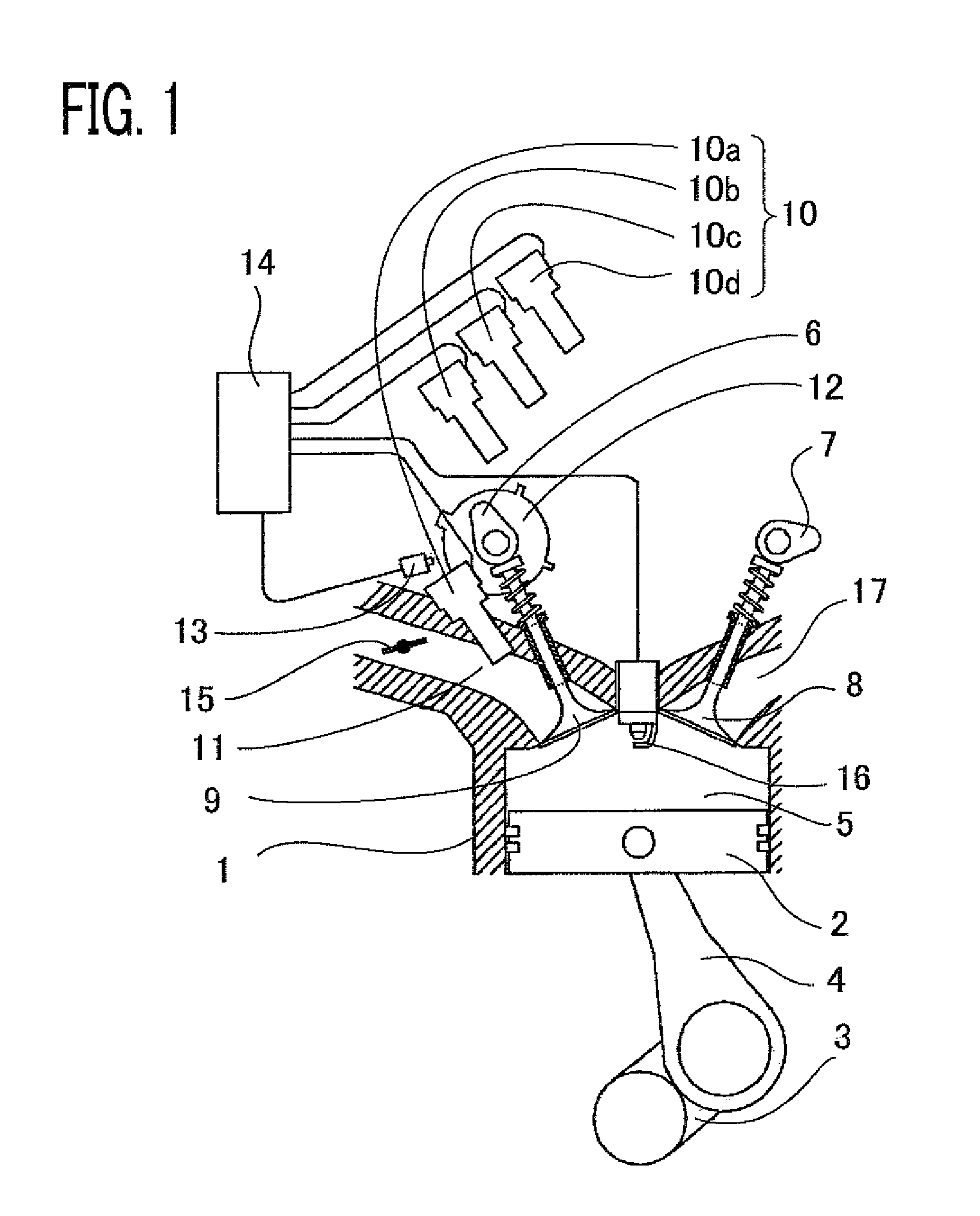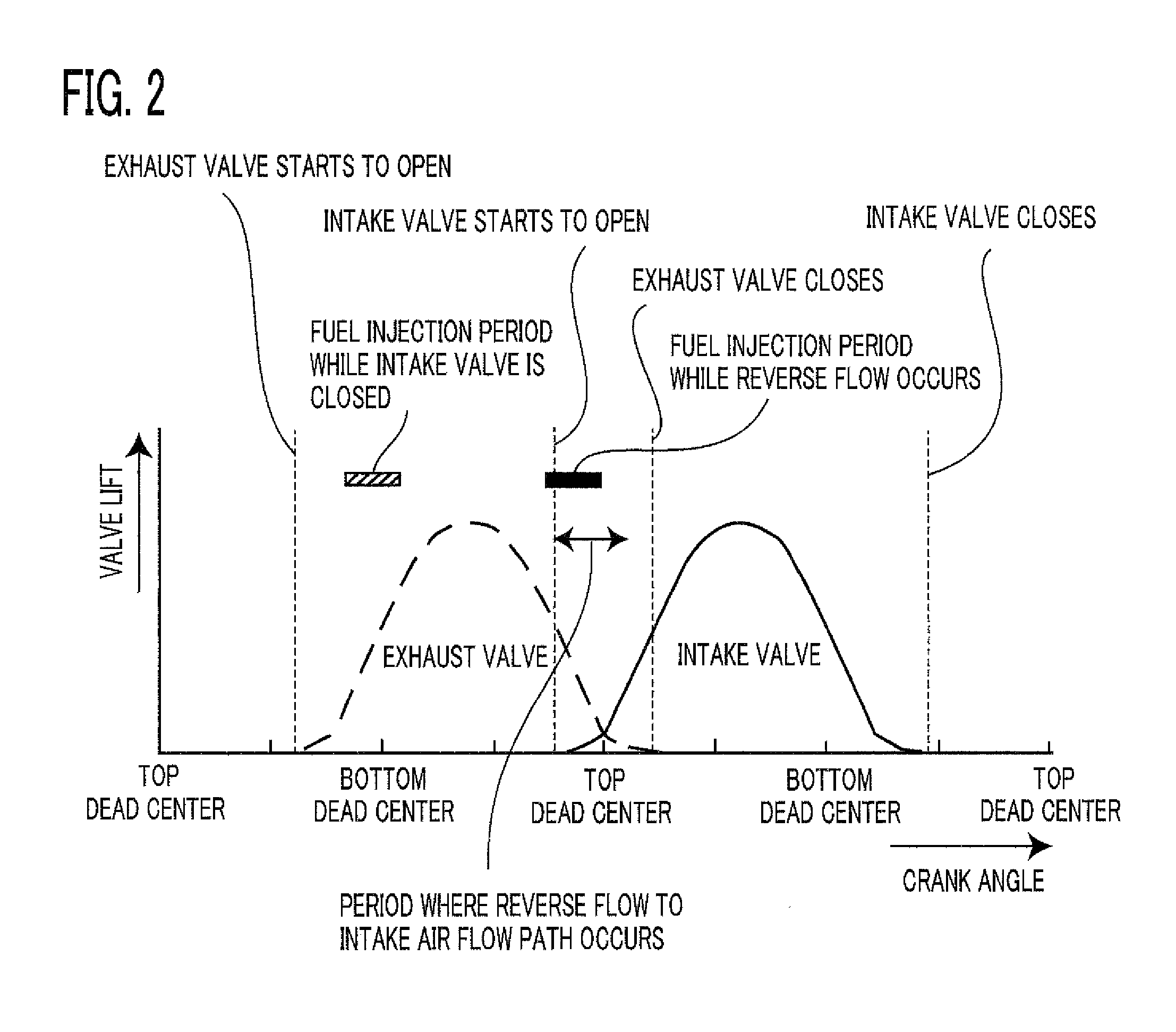Internal combustion engine fuel injection control method
a technology for fuel injection and combustion engines, applied in electrical control, process and machine control, instruments, etc., can solve the problems of deterioration of low-temperature startability, deterioration of -gas cleanness, particular problems, etc., and achieve the improvement of low-temperature startability, gasoline mileage, and exhaust-gas cleanness.
- Summary
- Abstract
- Description
- Claims
- Application Information
AI Technical Summary
Benefits of technology
Problems solved by technology
Method used
Image
Examples
embodiment 1
[0024]FIG. 1 is a configuration diagram of an internal combustion engine, provided with fuel injection valves for injecting fuel into the respective intake air flow paths of cylinders, that is based on an internal combustion engine fuel injection control method according to Embodiment 1 of the present invention. As illustrated in FIG. 1, the internal combustion engine according to Embodiment 1 of the present invention includes an internal combustion engine main body 1, a piston 2, a crank 3, a connecting rod 4, a combustion space 5, an intake cum 6, an exhaust cam 7, an exhaust valve 8, an intake valve 9, a fuel injection valve 10, an intake air flow path 11, a cam shaft rotation angle signal plate 12, a cam shaft rotation angle detector 13, an engine controller 14, a throttle valve 15, an ignition plug 16, and an exhaust manifold 17.
[0025]At first, with reference to FIG. 1, there will be explained the basic operation of an internal combustion engine utilizing a method of injecting ...
embodiment 2
[0055]In Embodiment 1 described above, there has been explained controlling operation in which, based on the coolant temperature and the exhaust-gas temperature, the proportion of the amount of fuel injected while the intake valve 9 is closed to the amount of fuel injected during the reverse flow period is calculated; however, Embodiment 2 of the present invention is to provide a specific method for fuel injection control in which the proportion of the amount of fuel injected while the intake valve 9 is closed to the amount of fuel injected during reverse flow period is changed, based on the running time of engine operation and the cycle numbers of engine operation, instead of the exhaust-gas temperature. The method will be explained below with reference to FIGS. 7 and 8.
[0056]FIG. 7 is a flowchart, of Embodiment 2, representing the setting of fuel injection control based on the coolant temperature and the running time of engine operation or the cycle numbers of engine operation and...
PUM
 Login to View More
Login to View More Abstract
Description
Claims
Application Information
 Login to View More
Login to View More - R&D
- Intellectual Property
- Life Sciences
- Materials
- Tech Scout
- Unparalleled Data Quality
- Higher Quality Content
- 60% Fewer Hallucinations
Browse by: Latest US Patents, China's latest patents, Technical Efficacy Thesaurus, Application Domain, Technology Topic, Popular Technical Reports.
© 2025 PatSnap. All rights reserved.Legal|Privacy policy|Modern Slavery Act Transparency Statement|Sitemap|About US| Contact US: help@patsnap.com



